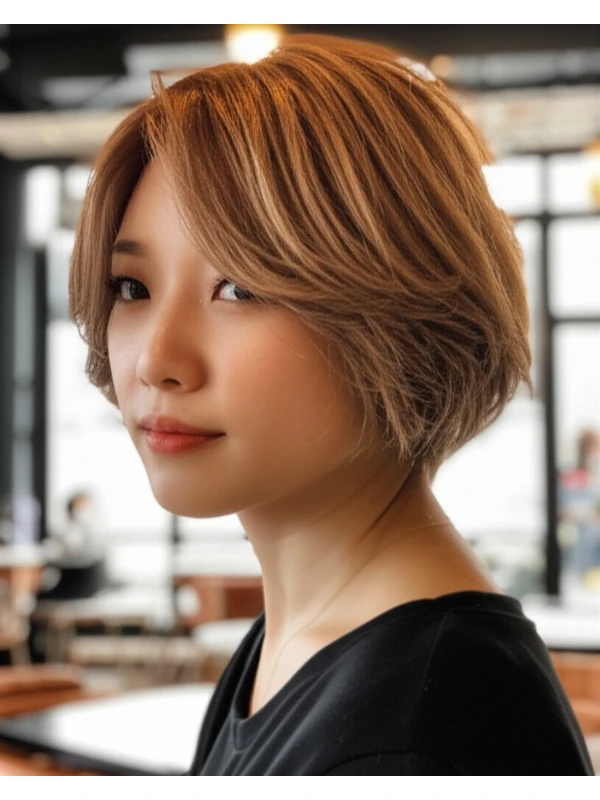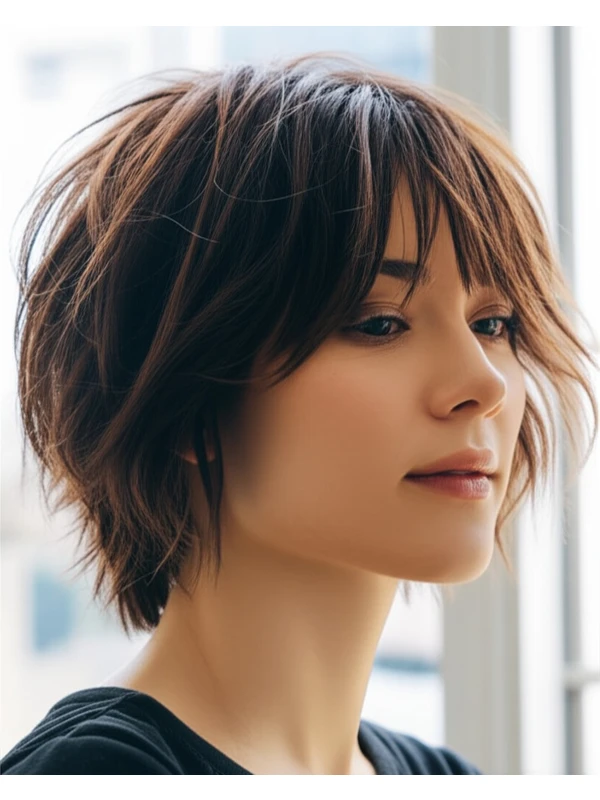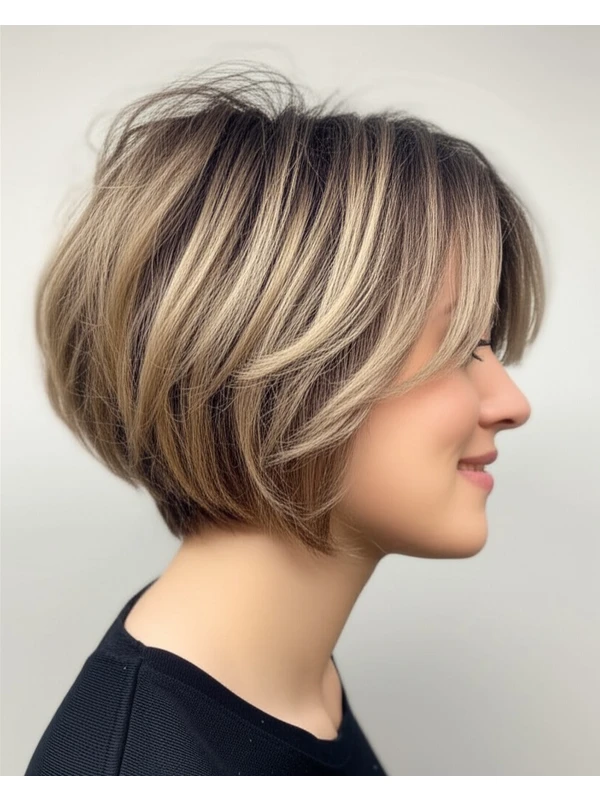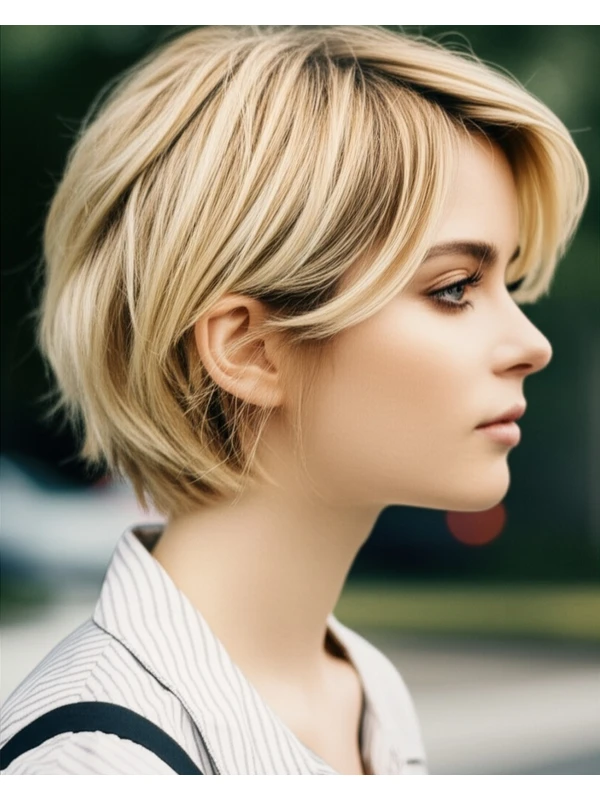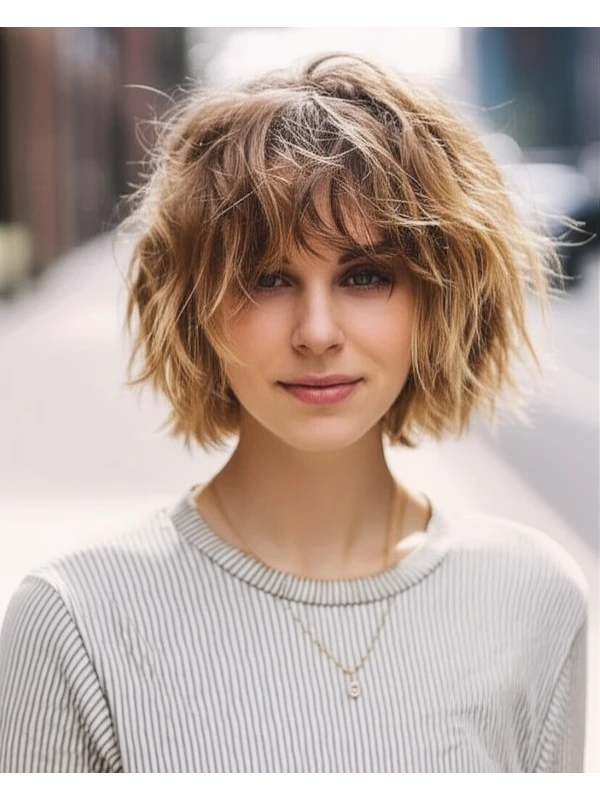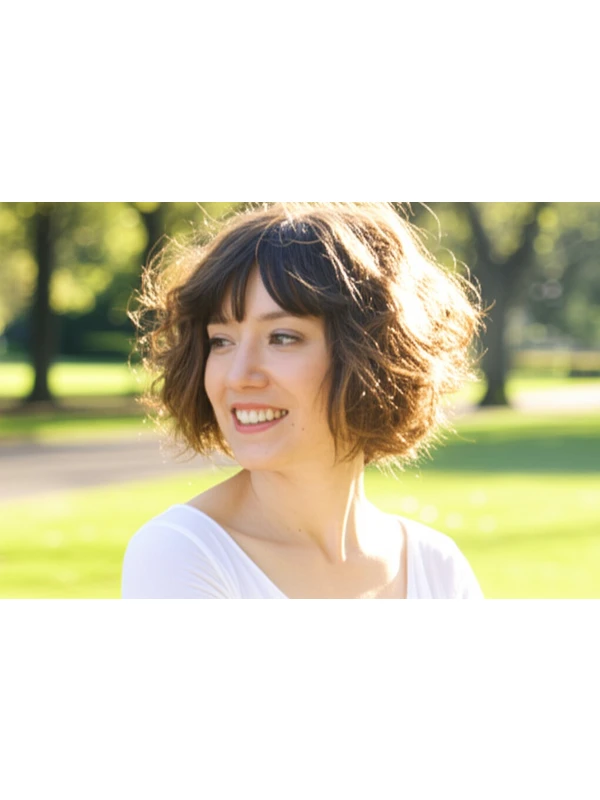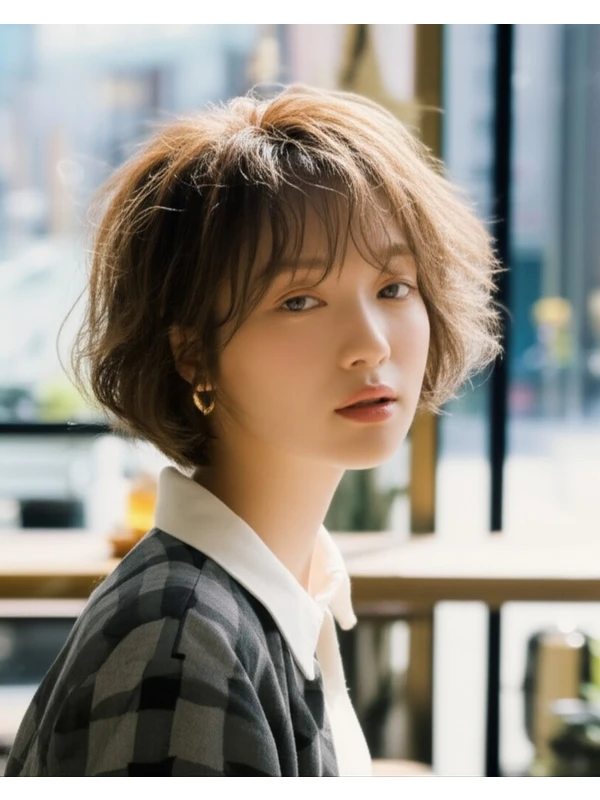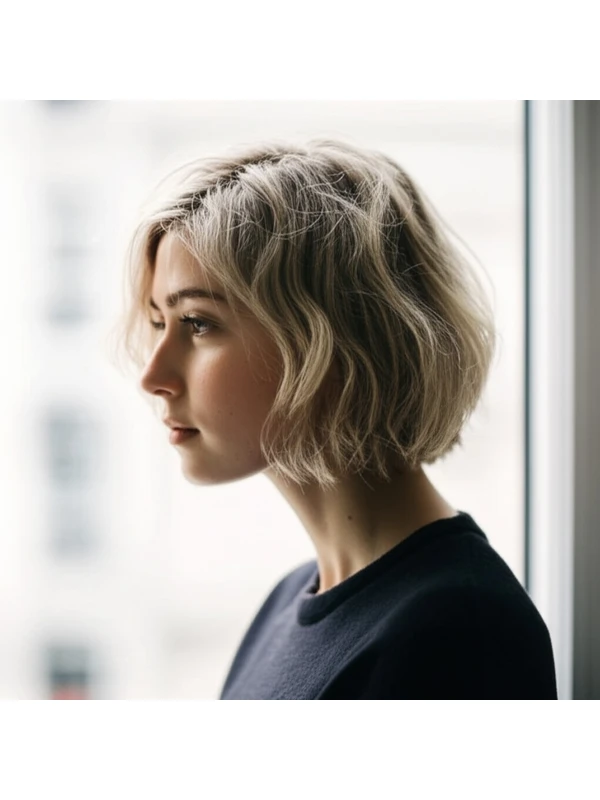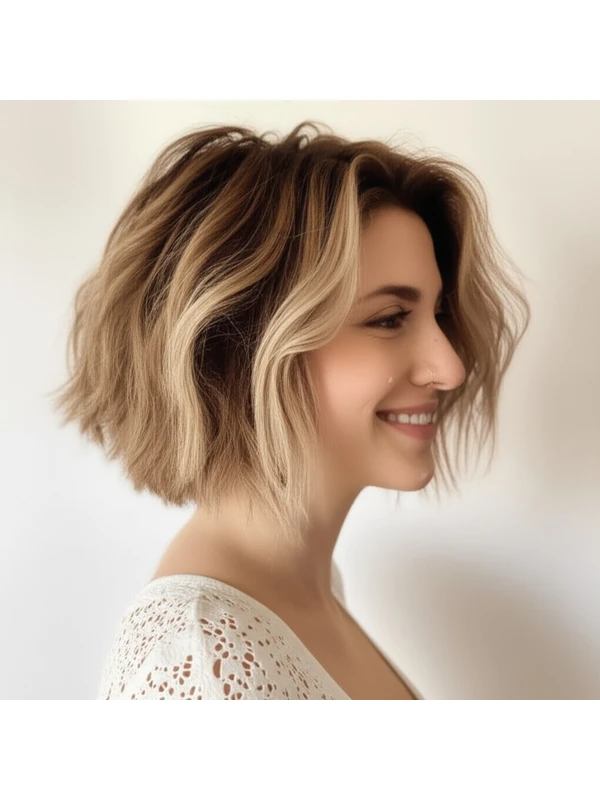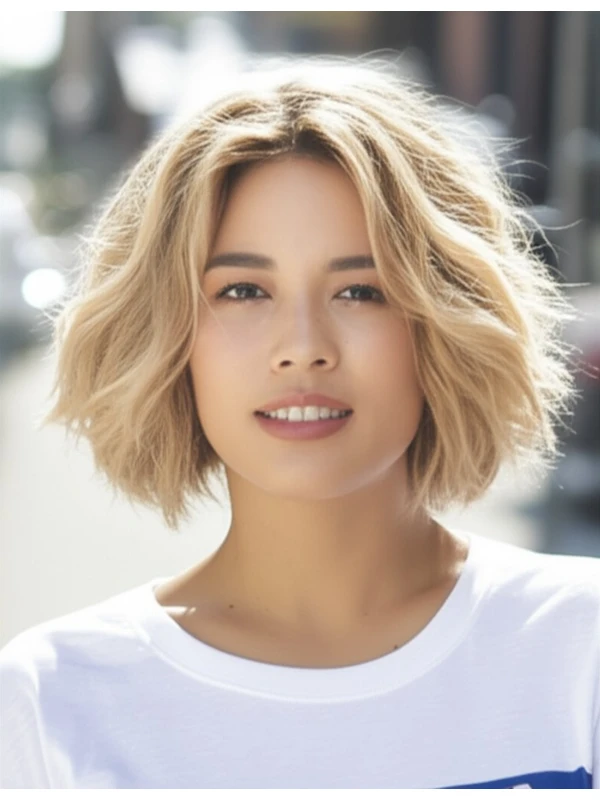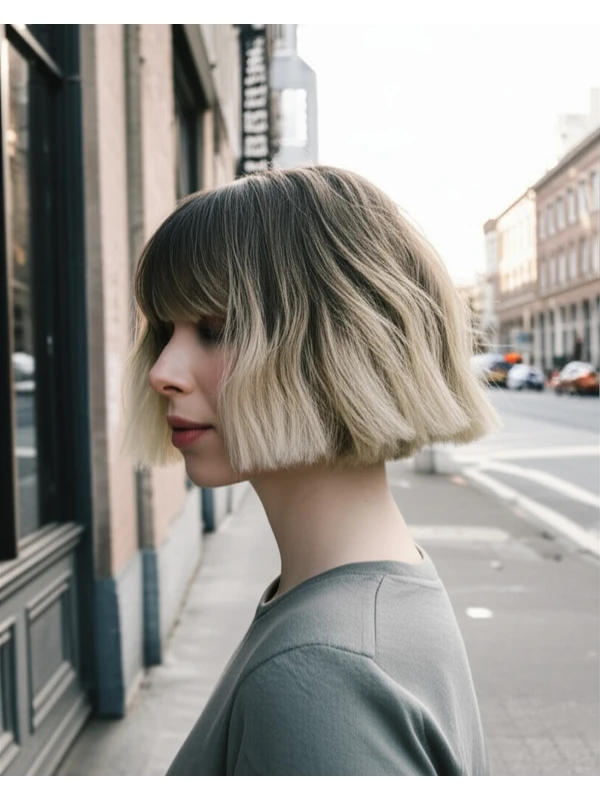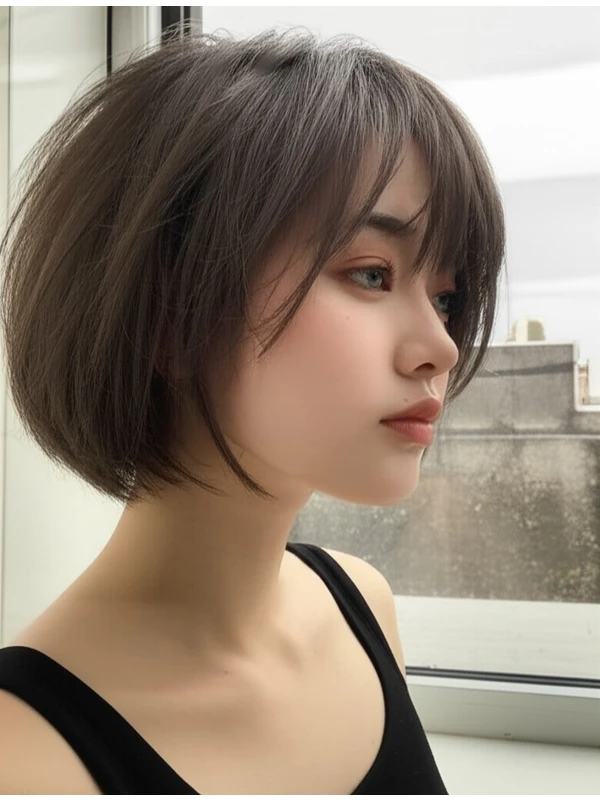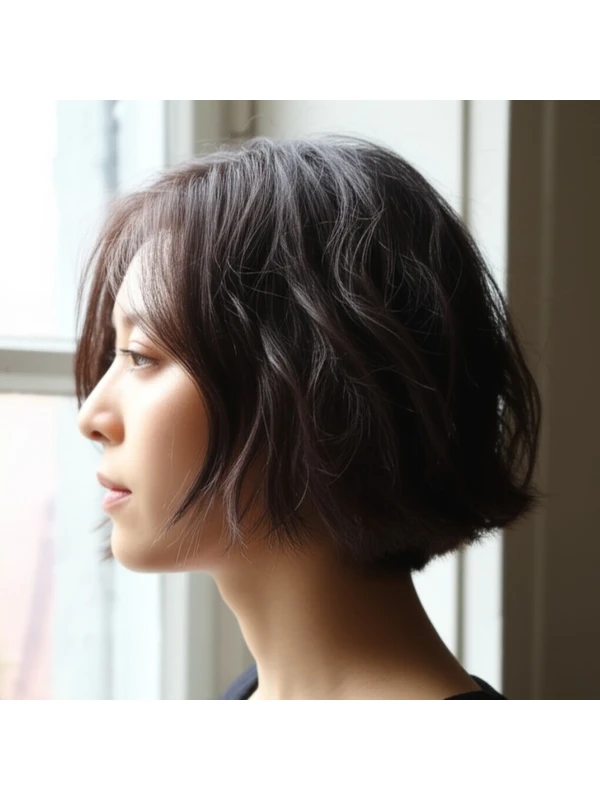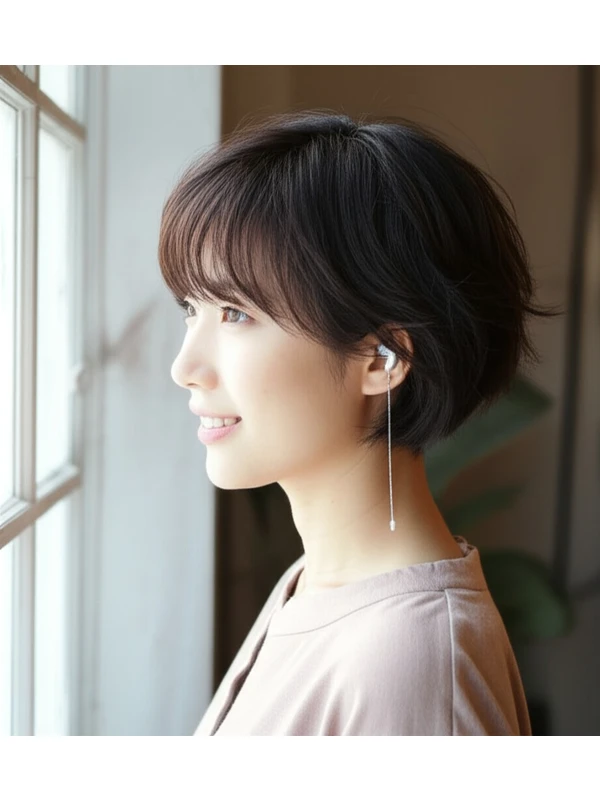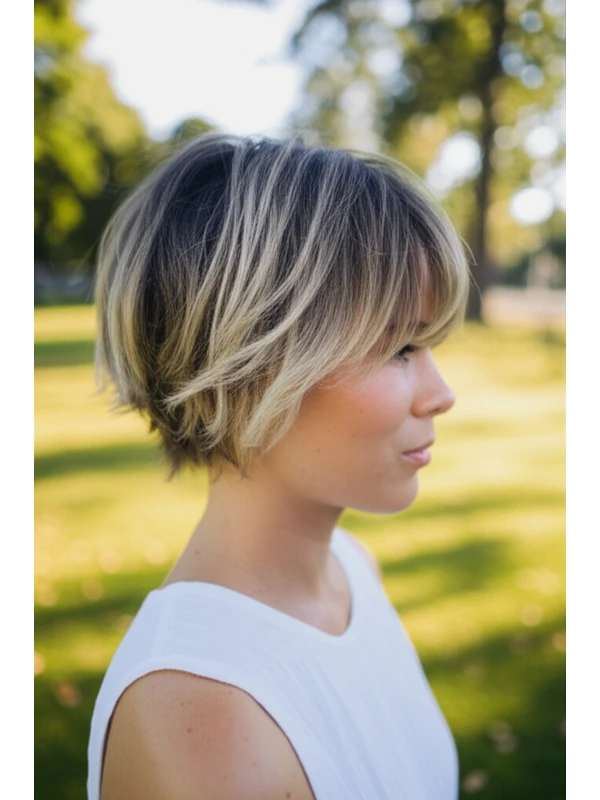#The Bob with Face Framing: A Style Guide for Everyone
The bob haircut has been a classic for decades, but the “bob with face framing” takes it to another level of personalization and flattering appeal. This isn’t just a bob; it's your bob, designed to highlight your best features. Let’s dive into everything you need to know about this versatile style!
#1) Background & Definition: What is a Face-Framing Bob?
The face-framing bob is essentially a short haircut, typically falling between the chin and shoulders (more on length variations below), with layers specifically cut around the face. These layers are shorter than the rest of the hair, drawing attention to your cheekbones, eyes, and jawline.
- Cut Geometry: It’s built around a foundational bob shape – blunt or slightly layered – then softened with face-framing pieces that angle downwards towards the neck.
- Key Features: The defining characteristic is intentional asymmetry. The layers aren't uniform; they are strategically placed to create movement and soften harsh angles.
- Typical Length Ranges:
- Chin Bob: Hits right at the chin, a bold statement.
- Classic Bob (Mid-Neck): Falls between the chin and collarbone – very versatile.
- Lob (Long Bob): Reaches the shoulders or slightly below, offering more length.
- Alternative Names: Layered bob, angled bob, soft bob, graduated bob (though "graduated" can imply a different layering technique).
#2) Face Shape Fit: Finding Your Perfect Angle
The beauty of the face-framing bob is its adaptability. However, certain adjustments are key to maximizing its flattering effect for each face shape.
- Oval: Lucky you! An oval face suits almost any length and variation of this style. A slightly angled bob with soft layers works wonders. A full fringe can add even more balance.
- Round: Avoid bobs that end at the chin, as they can emphasize roundness. Opt for a longer lob (shoulder-length or below) with face-framing layers starting below the cheekbones to elongate the face. Side parts are generally more flattering than center parts. A wispy fringe can help slim.
- Square: Soften those angles! Face framing is your friend here. Layers should start higher around the jawline and temples, blending downwards in a gentle curve. Avoid blunt lines that accentuate squareness. A side-swept fringe softens the forehead.
- Heart: With a wider forehead and narrower chin, this style can balance proportions beautifully. Chin-length or slightly longer bobs with face-framing layers that start around the cheekbones are ideal. A long, soft fringe helps to minimize forehead width.
- Diamond: Similar to heart shapes, diamond faces benefit from softening angles. A lob with subtle layering and a side part will create balance. Face-framing should focus on softening the jawline and temples.
- Oblong (Long): Add width! Chin-length or slightly shorter bobs work well, but ensure face-framing layers are more substantial to add visual breadth. Avoid styles that fall too far past the shoulders, as they can elongate the face further. A blunt fringe can also shorten a long face.
#3) Body Proportions & Height Guidance: Finding Your Silhouette
Beyond just your face shape, consider your overall body proportions and height for the most harmonious look.
- Petite: Shorter bobs (chin-length to mid-neck) tend to be more flattering as longer styles can overwhelm a smaller frame. Volume on top adds height.
- Average Height: Most lengths work well! Consider shoulder-length lobs for balance and movement.
- Tall: Longer lobs or even slightly longer styles create visual harmony with your stature. Avoid overly short bobs that might look disproportionately small.
- Narrow Shoulders: Face-framing layers can add width to the shoulders, creating a more balanced silhouette. Volume at the sides is key.
- Broad Shoulders: Avoid excessive volume on top of the head as this will emphasize shoulder width. A sleek, streamlined bob or lob with minimal layering can be very chic.
- Neck Length (Short/Long): Shorter necks benefit from styles that don’t end directly at the neck line; a slight angle is more flattering. Longer necks can handle bobs ending right at the chin without looking constricted.
#4) Works Best With Hair Types & Densities: Tailoring to Your Texture
The face-framing bob adapts beautifully across various hair types, but adjustments are necessary for optimal results.
- Straight: This style shines on straight hair! Layers will create movement and definition. Consider a slightly angled cut for extra lift.
- Wavy: Embrace the waves! Face-framing layers enhance natural texture and bounce. A texturizing product can define the waves even further.
- Curly/Coily: This style works, but shrinkage is crucial to consider. Communicate your curl pattern (2A-4C) clearly with your stylist. Shorter lengths are often needed to account for shrinkage – what looks like a lob in the salon might become a bob once dry! Layering needs to be precise to avoid bulkiness.
- Fine: Face-framing layers create the illusion of fullness. Avoid overly heavy layering, which can make fine hair look even thinner. Blunt lines at the ends add density.
- Medium: This is the sweet spot for most face-framing bobs! Layers will enhance movement and shape without looking sparse or bulky.
- Thick: Strategic layering is essential to remove weight and create a lighter, more manageable style. Face-framing layers should be blended seamlessly into the rest of the hair.
#5) Styling Variations: From Sleek to Textured
The beauty lies in its versatility!
- Sleek vs. Textured: A sleek bob uses heat styling (straightener) for a polished look. A textured bob embraces natural texture with minimal or no heat, air-drying and using texturizing products.
- Middle vs. Side Part: A center part creates symmetry; a side part adds softness and volume.
- Fringe Variations: Blunt bangs, wispy bangs, curtain bangs (longer, face-framing), or even no fringe at all – the choice is yours!
- Occasion Styling: A sleek bob is perfect for office settings. A textured bob with tousled waves suits a casual weekend look. Add some hair accessories like clips or headbands for an evening event.
#6) Maintenance: Keeping Your Bob Looking Fresh
- Trim Cadence: Every 6-8 weeks, depending on growth rate and desired shape.
- At-Home Routine: Regular shampooing (frequency depends on your scalp), conditioning after every wash, and a weekly deep conditioner for added moisture.
- Heat vs Air Dry: Minimize heat styling to protect hair health. When using heat, always use a heat protectant spray!
- Product Checklist:
- Shampoo & Conditioner: For your hair type.
- Leave-in Conditioner: Essential for hydration and detangling (especially important for curly/coily textures).
- Styler: Mousse, gel, or cream to enhance texture or hold.
- Finishing Spray: To lock in style and add shine.
- Estimated Daily Styling Time: 10-30 minutes, depending on desired look and hair type.
#7) Grow-Out Roadmap: Evolving with Grace
- Months 1-3: The shape is at its most defined. Regular trims maintain the face-framing layers.
- Months 3-6: The bob starts to lengthen into a lob. Face-framing layers may need slight adjustments to prevent them from looking disconnected. Consider adding more subtle layering throughout for continued movement.
#8) Color Pairings: Enhancing Your Bob’s Beauty
- Cool Undertones (pink, blue): Ashy blondes, cool browns, and even icy grays can look stunning with this cut.
- Warm Undertones (yellow, gold): Honey blondes, caramel highlights, and warm chocolate browns complement warmer skin tones beautifully.
- Low-Commitment Options: Balayage or babylights add dimension without a harsh root line – perfect for those hesitant about significant color changes.
#9) Season & Occasion Guide: Adapting to the Moment
- Spring/Summer: Lighter, brighter colors and beachy textures are ideal.
- Fall/Winter: Richer tones like chocolate brown or copper create a cozy vibe. A sleek bob is perfect for more formal occasions.
- Work: Sleek and polished – minimal fuss required!
- Weddings/Parties: Add volume, curls, or statement accessories to elevate the look.
#10) Cost & Time: What to Expect at the Salon
- Salon Time: Typically 45-90 minutes for a first cut; shorter for trims.
- Price Range: Generally falls in the mid-range of haircut prices – expect slightly more than a basic trim, but less than an elaborate style.
#11) Pros & Cons: Weighing Your Options
Pros: Versatile, flattering on many face shapes, relatively easy to maintain (with regular trims), can be adapted for various hair types and lengths. Cons: Requires regular trims to maintain shape, styling time can vary depending on desired look, may not be suitable for all hair textures without careful consideration.
#12) Salon Consultation Script: Your Questions Answered
Use these prompts when talking with your stylist!
- "I love the face-framing bob style – can you assess my face shape and recommend a length and layering that would flatter me?"
- “My hair shrinks significantly when it dries. How much shorter should we cut it to account for shrinkage?”
- "I’m looking for something low maintenance. What styling techniques will I need to master at home?"
- "Can you show me examples of how this style looks on people with similar face shapes and hair types as mine?"
- “What products do you recommend for my hair type to achieve the look we discussed?”
FAQs:
- Is a face-framing bob suitable for fine hair? Yes, but strategic layering is key to avoid looking sparse.
- How often do I need trims? Every 6-8 weeks to maintain shape and prevent split ends.
- Can I style it with air dry or do I need a straightener? It depends on your desired look! Air drying works well for textured styles, while a straightener creates a sleek finish.
- What if I want bangs later? Can I add them after the initial cut? Absolutely! However, discuss this with your stylist beforehand to ensure proper planning and layering.
- Will the face-framing layers make my hair look bulky? Not if layered correctly by a skilled stylist who understands your hair's density and texture.
- Can I do this myself at home? While possible, it’s best left to a professional for optimal results, especially with layering.
